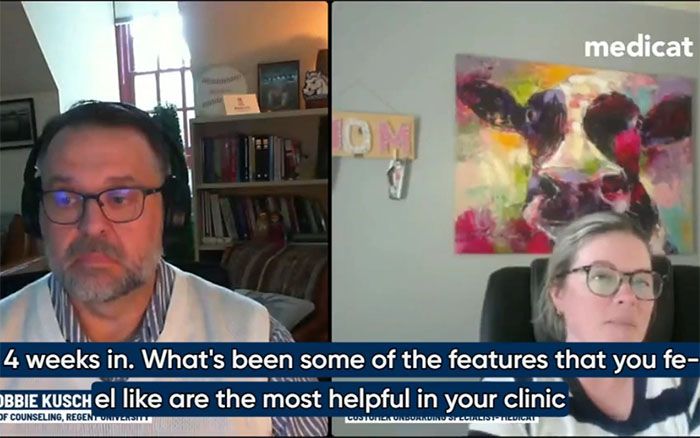How Colleges Expand Health & Wellness Services Without Breaking Budgets
Key Findings and Their Impact on College Mental Health
It’s the same story on nearly every campus: more student demand, fewer dollars, and staff who are already maxed out. Rising student need for medical, counseling, and wellness services continues to outpace the resources available to deliver them. Counselors carry overwhelming caseloads, nurses and providers stretch to cover long hours, and leaders are asked to do more with less year after year.
At the same time, institutional budgets remain tight, leaving many campus health directors asking the same question: How can we expand services without adding unsustainable costs?
One answer lies in grant funding. With the right approach, colleges and universities can secure external funding to launch new programs, invest in technology, and scale student wellness initiatives—all without overburdening institutional budgets (yes – it’s possible!).
Grant Funding Strategies to Strengthen Student Health & Counseling
Grant funding provides colleges with flexible financial support to address urgent health priorities. Unlike tuition dollars, student health fees, or general operating funds, grants are often designed to support innovative or high-impact projects.
For campus health and counseling centers, grants can fund:
- Hiring additional providers to reduce wait times
- Launching peer wellness education programs
- Implementing new technologies (like EHR solutions)
- Expanding telehealth or after-hours services
- Supporting targeted initiatives, such as substance misuse prevention, eating disorder, or suicide prevention programs
Aligning proposals with demonstrated student needs allows institutions to tap into a wide range of funding opportunities—from federal and state agencies, to private foundations and professional associations.
Where to Find Grant Opportunities
The first step in leveraging grant funding is knowing where to look. Some of the most common sources include:
Federal & State Agencies
- Substance Abuse and Mental Health Services Administration (SAMHSA): Offers grants for mental health services, substance use prevention, and crisis response.
- Health Resources and Services Administration (HRSA): Supports workforce development and access to care.
- State health departments: Many states provide funding for local initiatives such as immunization compliance or mental health workforce training.
Professional Associations
Organizations like the American College Health Association (ACHA) or NASPA: Student Affairs Administrators in Higher Education often highlight innovation grant opportunities relevant to student learning and success.
Private Foundations
Foundations such as the Robert Wood Johnson Foundation invest in programs that strengthen student mental health, resilience, and equity in care.
Institutional Partnerships
Colleges can also pursue joint proposals with local hospitals, nonprofit organizations, or community coalitions to broaden eligibility and impact.
Tips for Writing a Strong Grant Proposal
Grant writing can feel overwhelming, but breaking the process into manageable steps helps. Here are key strategies to increase your chance of success:
- Define the Need Clearly
Use campus-specific data, such as rising counseling waitlists or immunization compliance gaps, to demonstrate urgency. Pair quantitative statistics with student stories to humanize the need. - Align With Funder Priorities
Funders want to know how your project meets their mission. If a grant emphasizes “mental health access,” be explicit about how your initiative expands access in a way that is relevant to the foundation or agency you’re applying to. - Set Measurable Goals
Funders value impact. Outline specific, trackable outcomes—such as reducing average counseling wait times from three weeks to one week or increasing flu vaccination rates by 20%. - Build Partnerships
Highlight collaborations across campus and with community organizations. It’s important to showcase projects with broad buy-in and shared responsibility. - Plan for Sustainability
Demonstrate how the program will continue after the grant period ends. For example, integrating new workflows into your health center’s EHR system shows a path to long-term efficiency.
Common Pitfalls to Avoid
While grants can be highly impactful, there are challenges to watch out for:
- Overcommitting staff: Whenever possible, assign a dedicated grant manager or team, rather than overloading providers.
- Neglecting compliance: Many grants require careful reporting—failure to track outcomes can jeopardize future funding.
- Short-term thinking: Avoid relying solely on grants for ongoing operations. Use them strategically to launch programs that can later be sustained with institutional or long-term funding.
Key Takeaways
Expanding student health and wellness services doesn’t have to mean stretching institutional budgets. With the right strategy, grant funding can open doors to new programs, technology, and staff capacity that can directly benefit students. And by tapping into federal, state, and private resources, colleges can meet rising student demand while building stronger, healthier campus communities.
Want to see how technology can support your grant-funded initiatives?
















